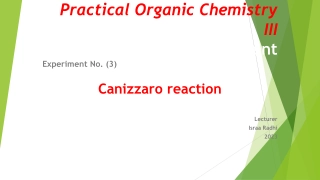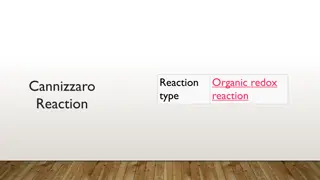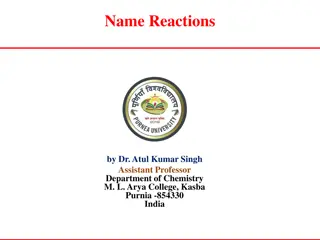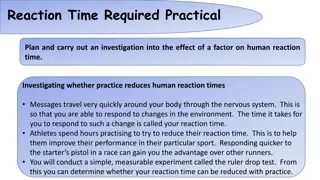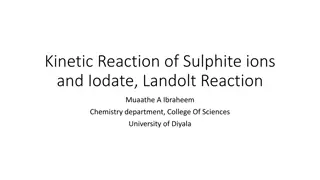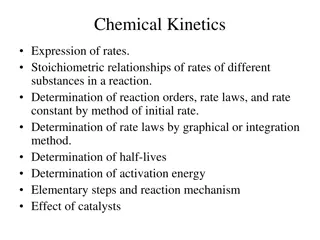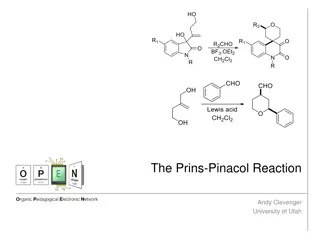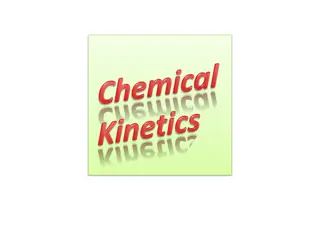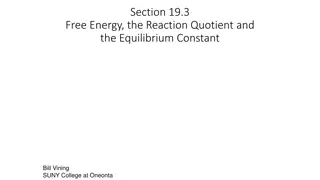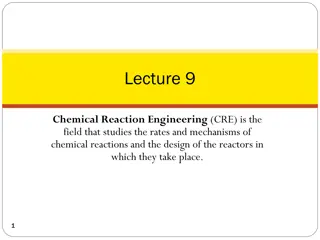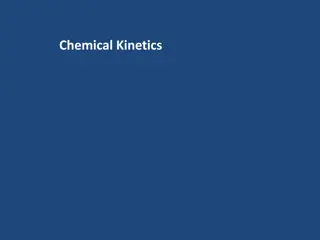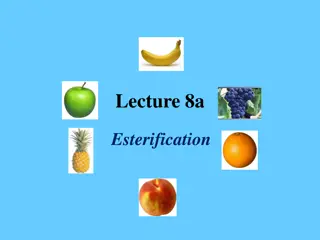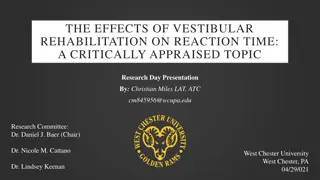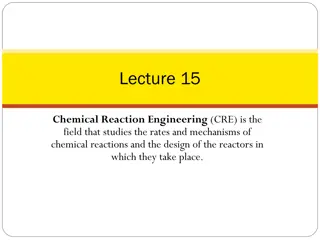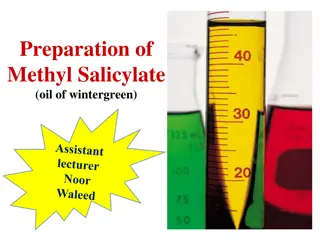
Esterification and Hydrolysis Reactions: Examples and Applications
Discover the fascinating processes of esterification and hydrolysis of esters, including their mechanisms, catalysts, and examples. Explore experiments involving different alcohols and carboxylic acids, as well as the sensory identification of esters. Learn how hydrolysis breaks down esters into alcohol and carboxylic acid through the use of strong bases.
Download Presentation

Please find below an Image/Link to download the presentation.
The content on the website is provided AS IS for your information and personal use only. It may not be sold, licensed, or shared on other websites without obtaining consent from the author. If you encounter any issues during the download, it is possible that the publisher has removed the file from their server.
You are allowed to download the files provided on this website for personal or commercial use, subject to the condition that they are used lawfully. All files are the property of their respective owners.
The content on the website is provided AS IS for your information and personal use only. It may not be sold, licensed, or shared on other websites without obtaining consent from the author.
E N D
Presentation Transcript
Esterification and Hydrolysis Reactions of Functional Groups Esterification reactions Hydrolysis of esters Resources Essential chemistry 12.4 (esterification) and 12.5 (hydrolysis of esters) Set 18 Q 5-7, STAWA Exploring Chemistry Set 25 Organic reactions 1
Review Compound class General formula Suffix example Alcohol R-OH -ol ethanol Carboxylic acid R-COOH -oic acid Ethanoic acid ester R-COOR -oate (with O-R group as a prefix) Methyl ethanoate 2
Esterification Esterification is the reversible equilibrium between a carboxylic acid and an alcohol The R groups (R1 and R2) are alkyl chains Products of the equilibrium are an ester and water 3
Esterification Esterification reactions under normal conditions are typically slow Rate can be increased using a catalyst (such as conc. Sulfuric acid) or by heating the reaction mixture As the reaction is an equilibrium the reaction never goes to completion, the yield of the ester will depend on the position of the equilibrium under the reaction conditions 4
Experiment 32 Tube A: ethanol, ethanoic acid, conc. sulfuric acid Tube B: butan-1-ol, ethanoic acid, conc. sulfuric acid Tube C: pentan-1-ol, ethanoic acid, conc. sulfuric acid Tube D: octan-1-ol, ethanoic acid, conc. sulfuric acid Tube E: 3-methylbutan-1-ol, ethanoic acid, conc. sulfuric acid Tube F: salicyclic acid, methanol, conc. sulfuric acid 6
which esters did we make? did your group correctly identify the smell? Reference: for the full table - https://jameskennedymonash.files.wordpress.com/2013/12/table-of-esters-and-their-smells-v2.pdf 8
Ester hydrolysis Heating an ester with a strong base causes it to hydrolysis Converts the ester into the alcohol and carboxylic acid it was originally made from Due to the presence of a strong base, the carboxylic acid is present as a salt. E.g. sodium ethanoate in the reaction above. 9
Saponification Ester hydrolysis is used in the manufacture of soaps Soap is a sodium salt of a fatty acid Do you remember the structure of fatty acids? 10
Saponification Since ancient times, the hydrolysis of esters has been used to convert fats and oils into soap (sodium salts of fatty acids) This type of ester hydrolysis is called saponification 11
On going work Essential chemistry Set 18 Q 5,6,7 esterification questions Essential chemistry Set 18 Q 8 hydrolysis of esters 12

